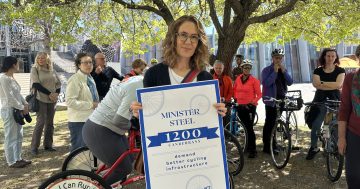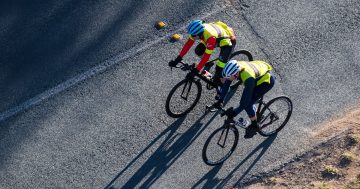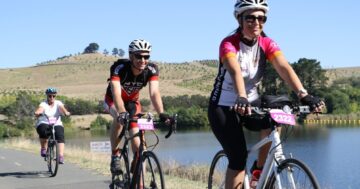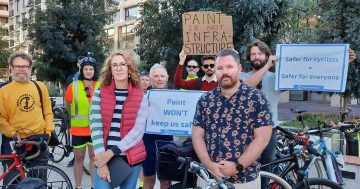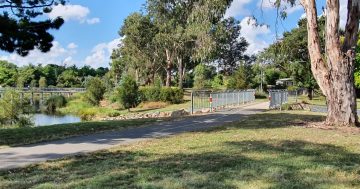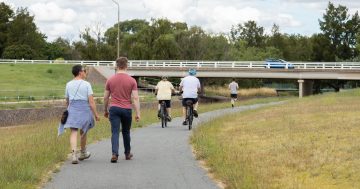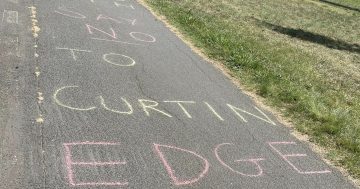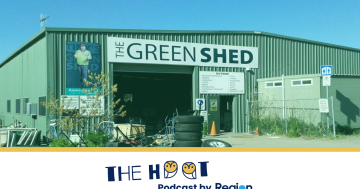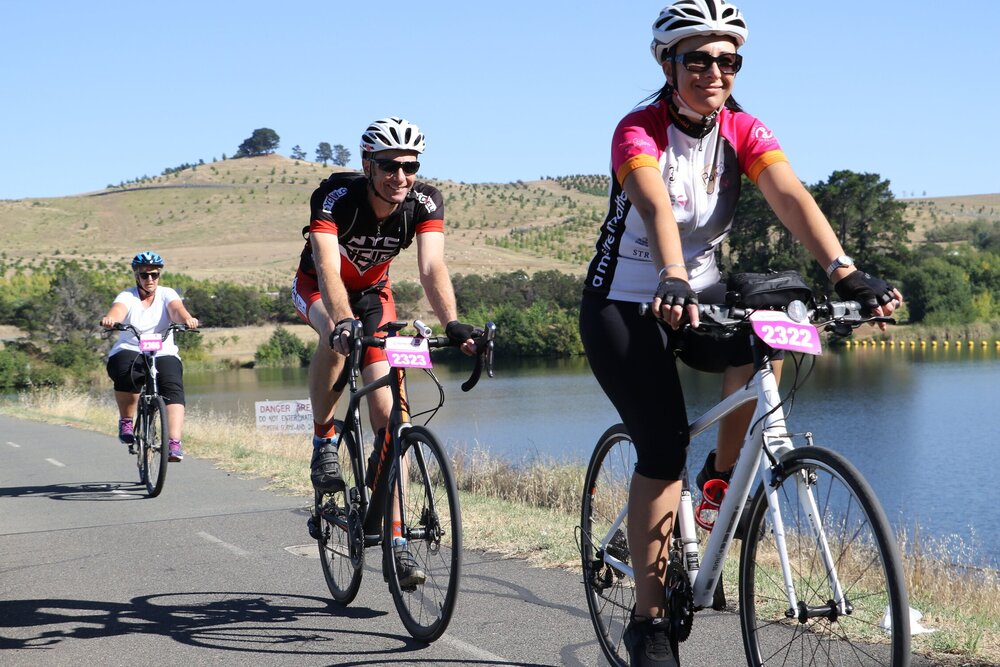
Pedal Power wants Canberra’s cycling network either restored or added to within five years. Photo: Pedal Power.
Canberra’s peak cycling body has launched a “feasible and valid” campaign, calling for the ACT Government to fast-track its plans for building new cycle paths.
Pedal Power says Canberra has earned a reputation as Australia’s cycling capital for its prolific paths and lanes, but more needs to be done more quickly if it’s to stay that way.
“As the top priority, we call on the government to design, build, and upgrade Canberra’s active travel and cycling network within the next five years and … identify additional missing links,” the online petition reads.
“This is a feasible and valid social investment that will increase people’s health, reduce emissions, and assist in the cost-of-living crisis.”
The ACT Government handed down its draft Active Travel Plan for public consultation in July 2022 as part of a push to get more Canberrans out of their cars and into walking shoes or onto bicycles or scooters.
The second priority in the 40-page document is to fill in “missing links in the cycle and community path network” and open up cycling and walking “as a choice to more destinations … for the daily commute to work or school, trips to the local shops and social activities”.
The most significant proposal is for several kilometres of new cycle path along the Monaro Highway between the Isabella Drive and Hindmarsh Drive intersections, extending up Hindmarsh Drive and connecting to Woden.
There are also new routes along Northbourne Avenue all the way up to Horse Park Drive, around State Circle, and throughout the Molonglo Valley.
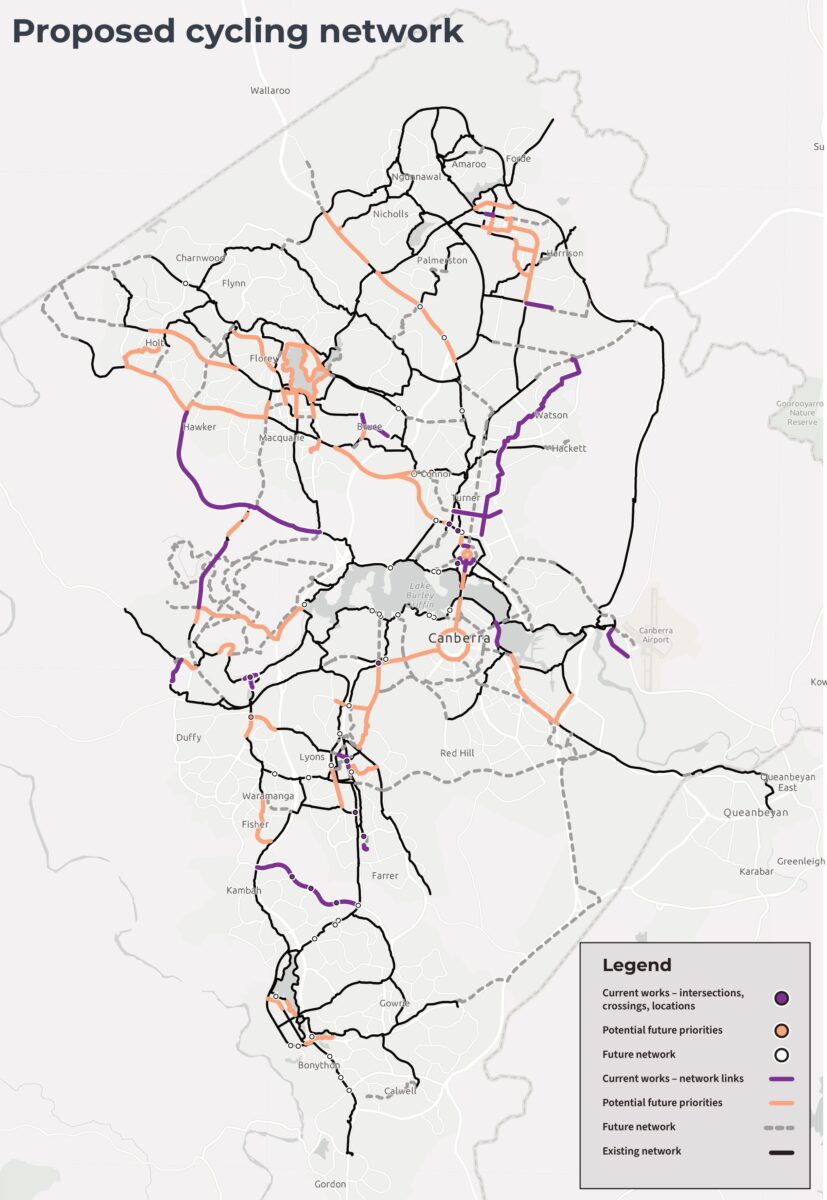
Proposed cycling network, as seen in the ACT Government’s draft Active Travel Plan. Photo: ACT Government.
Pedal Power describes the plan as a “good, broad document”, but criticises the lack of a timeline and commitment to increased funding.
The campaign is backed by several local organisations, including the Conservation Council ACT Region, the ACT Council of Social Services (ACTCOSS), the Public Transport Association of Canberra (PTCBR), SEE Change, the Braddon Collective and Living Streets Canberra.
They want the new routes constructed within five years and “at least 90 per cent” of Canberra’s existing cycle lanes, shared paths, and footpaths brought up to “good condition” within the same period.
The petition also proposes an annual review of the network to add additional links where needed.
The government’s draft Active Travel Plan is accompanied by a new draft Design Guide outlining ways the ACT’s road and intersection designs could mirror “best-practice” ones used in many European cities. They recommend raising pedestrian crossings, setting bike paths apart with green paint or concrete islands and “tightening an intersection’s geometry” to slow down motorists.
Pedal Power asks for all this to be fast-tracked too, particularly along “principal cycle routes”, even if it means retrofitting existing town centre intersections.
The ACT’s town and group centres would also ideally have a series of bike cages or “other secure, covered bike parking and other end-of-trip facilities”.
Pedal Power executive director Simon Copland says – put together – these investments will play a pivotal role in encouraging more travellers and commuters to choose bicycles over the car.
“By supporting these demands, the government can create a safer and more convenient environment for cyclists and pedestrians, reduce traffic congestion and emissions, help people with cost of living, enliven our streets, and promote a healthier lifestyle for Canberrans.”
ACTCOSS CEO Dr Devin Bowles echoes his words, asking for both the Active Travel Plan and Design Guide to be “fully funded, with clear timelines and targets”.
“If we want to alleviate cost-of-living pressures, address climate change, improve our health and strive for transport equity, ensuring we build and maintain an accessible and cycle-friendly city is essential.”
The ACT Government says they’re still working on funding allocations in the upcoming budget, but promoting active travel remains a “key priority”.
“The ACT Government has been consulting on a draft Active Travel Plan which has a key priority of creating safe infrastructure for walking and cycling,” Minister for Transport Chris Steel said.
“We’d like to see more people have the opportunity to take up those sustainable transport options which do help to bring down costs and improve our quality of life in Canberra.”












